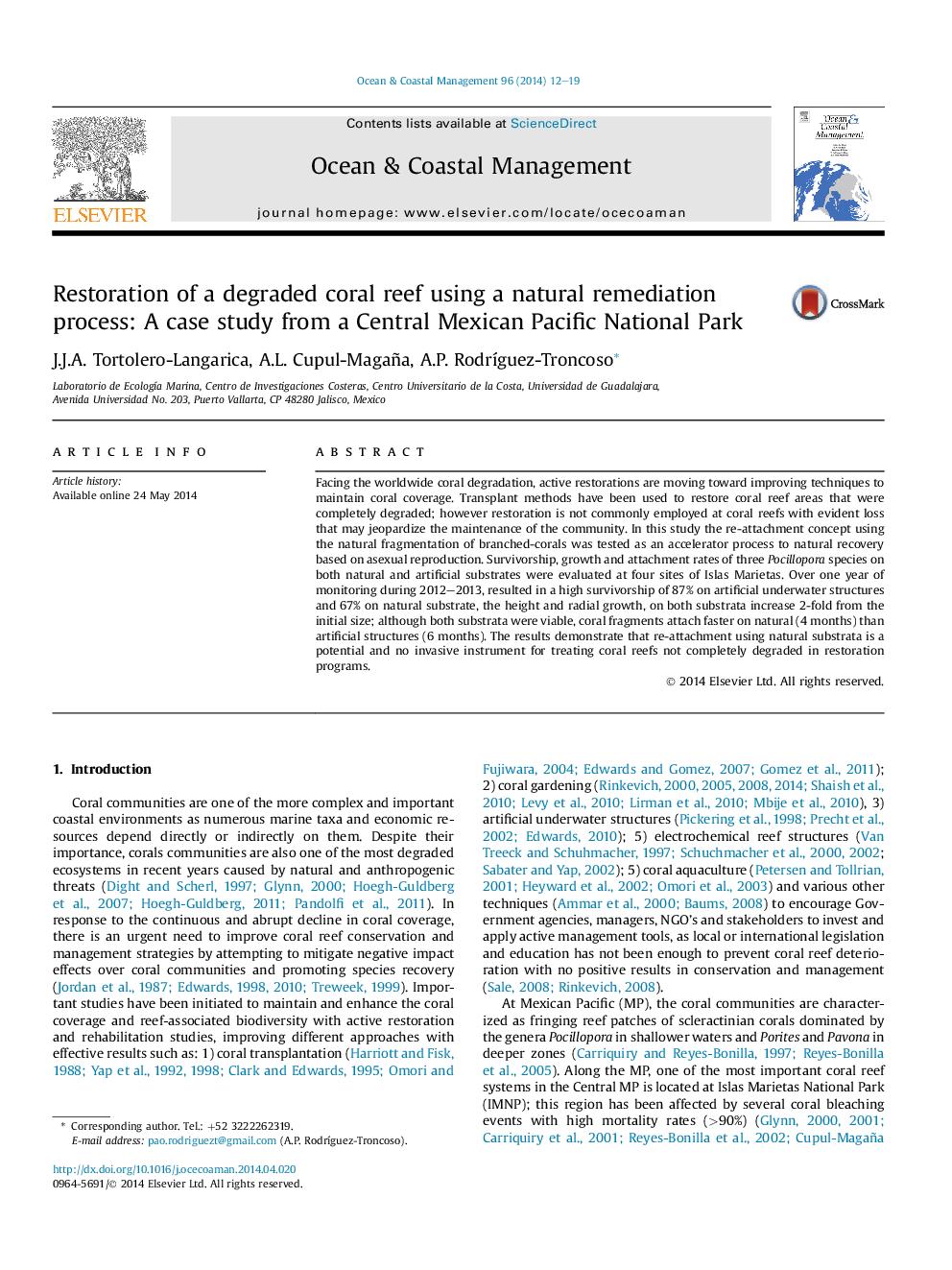| Article ID | Journal | Published Year | Pages | File Type |
|---|---|---|---|---|
| 1723680 | Ocean & Coastal Management | 2014 | 8 Pages |
•Re-attachment using natural and artificial substrata was tested at a National Park.•Three Pocillopora species were used for their fast growth and high abundance.•Pocillopora fragments increase 2-fold their the height and radial growth, on both substrata.•Re-attachment using natural substrata is the most suitable and no invasive at the area.
Facing the worldwide coral degradation, active restorations are moving toward improving techniques to maintain coral coverage. Transplant methods have been used to restore coral reef areas that were completely degraded; however restoration is not commonly employed at coral reefs with evident loss that may jeopardize the maintenance of the community. In this study the re-attachment concept using the natural fragmentation of branched-corals was tested as an accelerator process to natural recovery based on asexual reproduction. Survivorship, growth and attachment rates of three Pocillopora species on both natural and artificial substrates were evaluated at four sites of Islas Marietas. Over one year of monitoring during 2012–2013, resulted in a high survivorship of 87% on artificial underwater structures and 67% on natural substrate, the height and radial growth, on both substrata increase 2-fold from the initial size; although both substrata were viable, coral fragments attach faster on natural (4 months) than artificial structures (6 months). The results demonstrate that re-attachment using natural substrata is a potential and no invasive instrument for treating coral reefs not completely degraded in restoration programs.
